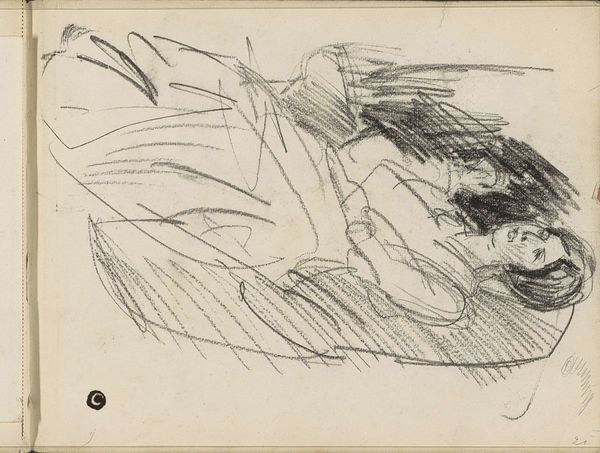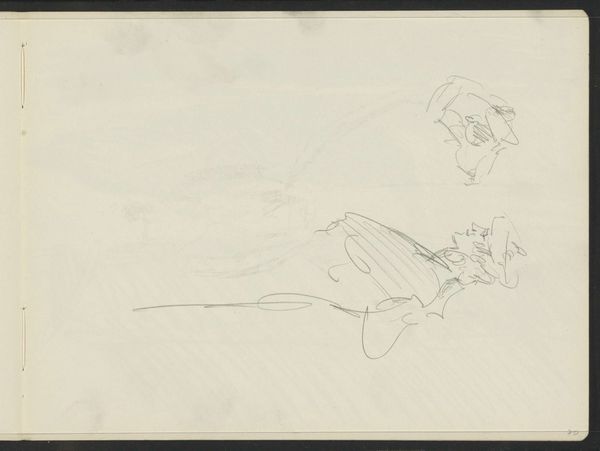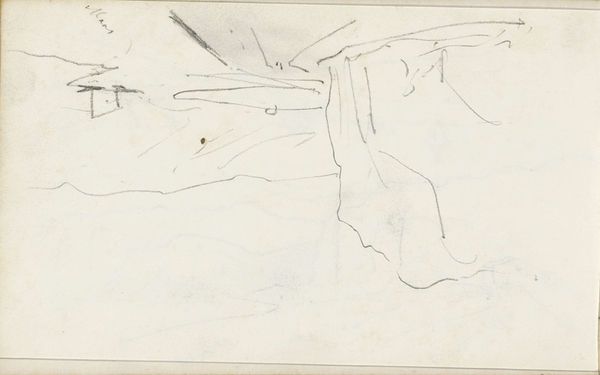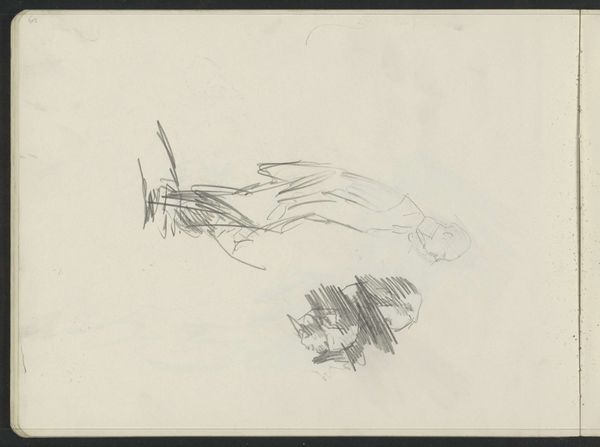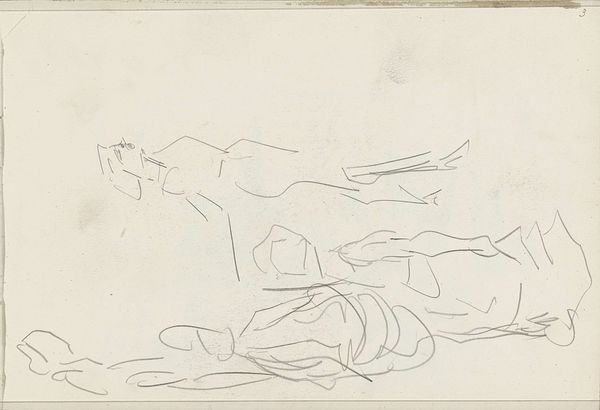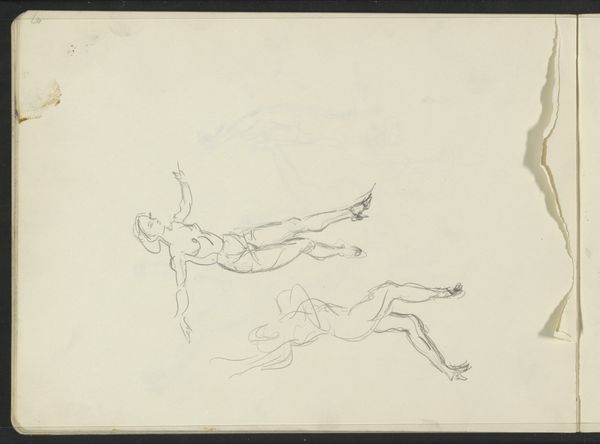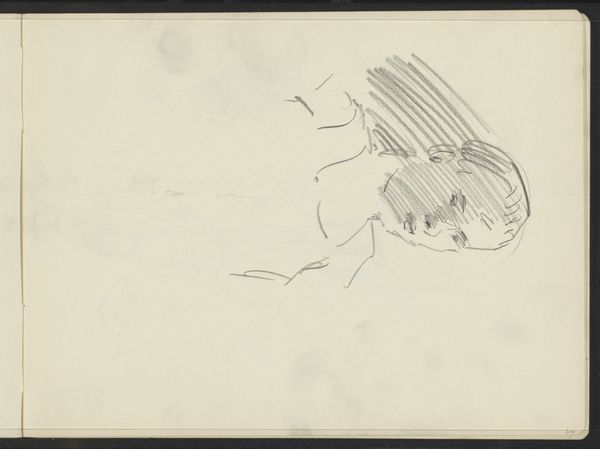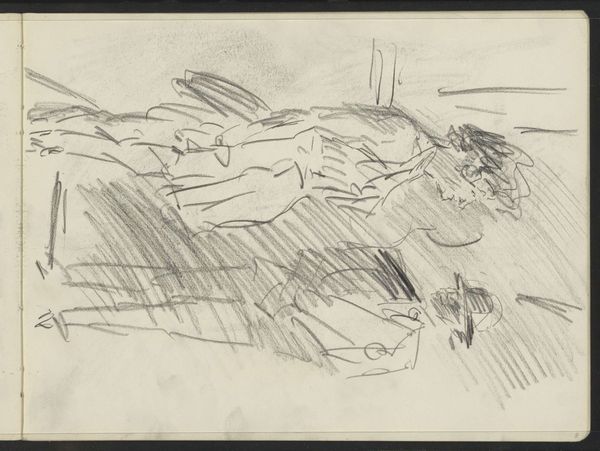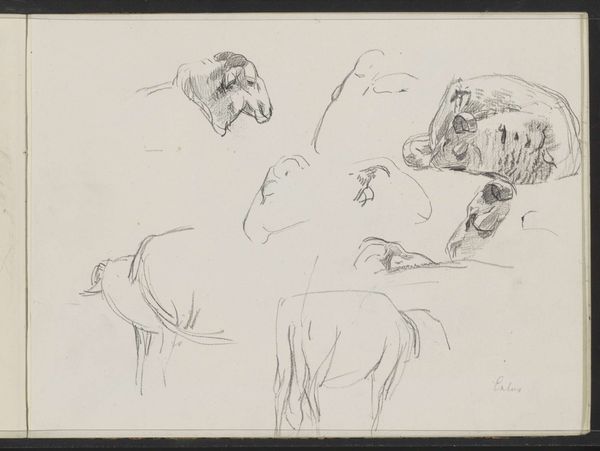
drawing, paper, pencil
#
portrait
#
drawing
#
pen sketch
#
figuration
#
paper
#
pencil
Copyright: Rijks Museum: Open Domain
Editor: Here we have "Studieblad met benen en een zittende vrouw," a drawing by Isaac Israels, likely from the 1915s to 1925s. The work on paper seems incomplete and very intimate. What structural elements do you observe that shape your interpretation? Curator: Immediately, the stark contrast in line quality is compelling. Observe the defined, almost sculptural hatching creating deep shadows against the suggestive contour lines. This juxtaposition serves not only to describe form but also to activate the surface. Editor: I notice the dynamism that contrast creates; it also sets up a hierarchy. I can't quite determine the focal point in this sketch. Is there a specific figure/object Israels tries to emphasize? Curator: The implied weight, rendered solely through line and tone, vying against ethereal forms. Semiotically, the lower portion, weighted by dense lines suggests not just physicality but temporal grounding for the less concrete representation of a seated figure in the background. Ask yourself: what feelings do these structural dichotomies inspire within the viewer? Editor: It makes the study almost architectural. Do you think the empty space contributes anything essential to this effect? Curator: Indubitably. The negative space surrounding each figural element acts as a vital counterpoint. Rather than absence, we may consider it a crucial articulation of form, pushing us towards considering formal interplay within an environment with the same value as the figures themselves. Editor: Seeing it as having this interaction gives it a whole other dimension, creating something from seemingly little. Curator: Indeed. Consider then, what new layers we might discover by questioning presumed voids in works we examine moving forward.
Comments
No comments
Be the first to comment and join the conversation on the ultimate creative platform.
